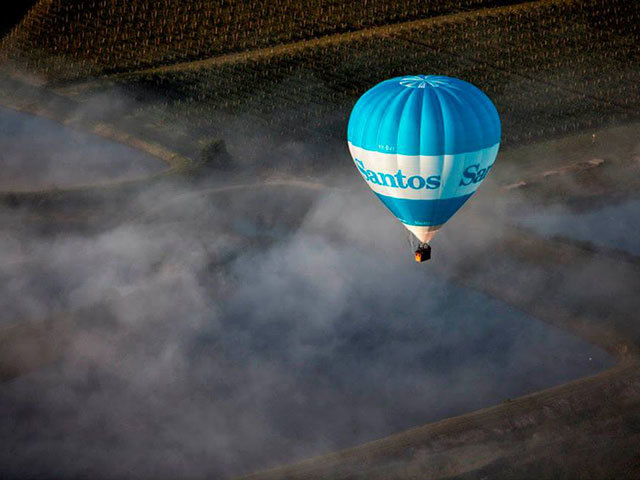
Australia’s Santos has awarded the biggest contract tied to its $3.6 billion Barossa liquefied natural gas (LNG) project in northern Australia that will backfill Darwin LNG. This offers a strong signal that a final approval for the scheme is imminent.
Santos said today that BW Offshore will build, connect and operate the floating production storage and offloading (FPSO) vessel. The deal is subject to a final investment decision (FID), expected within weeks, and marks the largest capital expenditure component of the $3.6 billion Barossa offshore gas and condensate project designed to backfill the ageing Darwin LNG export terminal.
Under a hybrid financing agreement, the Barossa joint venture will lease the FPSO following an upfront prepayment of around half the capital cost and hold an option to buy-out the floater. This “achieves an overall reduction of approximately $1 billion in capital expenditure,” said Santos.
“This reduction in capital expenditure makes Barossa one of the lowest cost of supply projects in the world for LNG and will provide new supply into a tightening LNG market,” said Santos chief executive Kevin Gallagher.
A chart shown at the company’s investor day late last year suggested, without naming competing projects, that Barossa-to-Darwin LNG would be slightly lower cost than PNG LNG and significantly below Woodside Petroleum’s brownfield projects in Western Australia, Australian research and consultancy firm EnergyQuest reported last December.
The FPSO will be built in South Korea and Singapore before being towed and permanently located at the field, where it will process natural gas prior to its transport via pipeline to Darwin LNG. Condensate will be stored on the FPSO for periodic offloading.
Barossa will provide the next source of gas for the existing Santos-operated Darwin LNG plant once current reserves from the Santos-operated Bayu-Undan field in the Timor Sea have been depleted.
Gallagher said the award of the FPSO contract builds on the momentum of the Barossa project over the past six months and is the final milestone ahead of FID.
“At the end of last year, we announced that transport and processing agreements had been finalised for Barossa gas to be tolled through Darwin LNG and we signed a long-term LNG sales agreement with Diamond Gas International, a wholly-owned subsidiary of Japan’s Mitsubishi Corporation,” added Gallagher.
FID on the Barossa project is expected in the coming weeks with first gas targeted for the first half of 2025, said Santos.
LNG developers in Australasia are racing against each other, as well as more competitive low-cost suppliers in Russia, Qatar and the U.S., to fill a projected market supply gap post 2025. Still, Barossa looks well positioned, as Santos has taken steps to boost the capital efficiency with an estimated breakeven price of $5/million British thermal units delivered to Asia.
Santos currently holds a 62.5% operated interest in the Barossa joint venture along with partner SK E&S (37.5 per cent).
Santos is finalising an agreement to sell a 12.5% stake in Barossa to Darwin LNG partner JERA and has a binding agreement to sell 25% interests in Bayu-Undan and Darwin LNG to SK E&S, subject to FID on Barossa.
Significantly, Barossa’s reservoir, with 16% to 20% carbon dioxide, makes it one of Australia’s dirtiest LNG developments, and would concern any investor focused on climate risks. Japan, the world’s top LNG buyer, is increasingly pushing a carbon neutral energy agenda. This likely explains why Santos and Diamond Gas, have also signed an agreement to jointly consider opportunities for carbon neutral LNG from Barossa.
